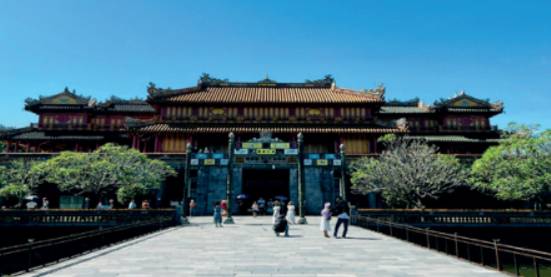
Hãy nhập câu hỏi của bạn vào đây, nếu là tài khoản VIP, bạn sẽ được ưu tiên trả lời.


1. Answers to the questions
1. What day was yesterday
It was Sunday
2.What time did Nam get up?
He got up at 6.00
3.Who did he have lunch with?
He have luch with his grandparents
4.What did you do after breakfast?
He helped his mom to clean the table after breakfast
5.What time did he have dinner ?
He had dinner at 6.30
6.What time did Nam go to bed?
He went to bed at 10.00
Nam(eat)..ate ...a bowl of noodles and (drink)....drank. a glass of milk for his breakfast.
After breakfast, he( help)...helped.. Mom yo clean the table.
After that, he( brush)....brushed.. his teeth, (but)..put....on clean clothes, and (go)..went....to his grandparents’s house.
He ( have)...had.... lunch with his grandparents.
He( eat).....ate... dinner at 6.30
After dinner, his presents (take)...took...him to the movie theater.
It (be)...was...a very interesting film.
They (come)....came. back home at 9.30.
Nam (go)....went ... to bed at ten o’clock.
Yesterday(be)....was...Sunday, Nam(get).got... up at six. And then he( have).had.... breakfast with his parents

1. I haven’ visited any castles or palaces in VietNam before. However, I know some of the most famous ones such as Hue Imperial Citadel, the Thang Long Imperial Citadel, and the Ho Dynasty Citadel. These historical sites are significant because they showcase the country's rich history and cultural heritage.
(Tôi chưa từng đến thăm bất kỳ lâu đài hay cung điện nào ở Việt Nam trước đây. Tuy nhiên, tôi biết một số địa điểm nổi tiếng nhất như Cố đô Huế, Hoàng thành Thăng Long và Thành nhà Hồ. Những di tích lịch sử này rất có ý nghĩa vì chúng thể hiện di sản văn hóa và lịch sử phong phú của đất nước.)
2. I haven’t seen this palace before, but I guess it is the Hue Imperial Citadel.
(Tôi chưa nhìn thấy cung điện này bao giờ, nhưng tôi đoán đó là Hoàng thành Huế.)

1. In some of these sentences, must is wrong or unnatural. Correct the sentences where necessary
1) You must come and see us again soon √
2). Tom can't meet us tomorrow. He must -> has to work
3) I must -> had to work late yesterday evening
4) I must get up early tomorrow. I have lots to do √
5) Julia wears glasses. She must -> has had to wear glasses since she was very young.

There have been efforts in Vietnam to protect and restore ecosystems, such as the Green Annamites Project, which aims to protect the forest ecosystem and biodiversity in the Annamites mountain range. In addition, there are initiatives to restore mangrove forests in the Mekong Delta and protect coral reefs in Nha Trang Bay.
Regarding the applicability of the ideas in the text to Vietnam, it depends on the specific context and conditions in Vietnam. The Great Green Wall project, for example, is focused on restoring degraded land in Africa, which may not be directly applicable to Vietnam. However, the idea of ecosystem restoration and protection is relevant to any country, and the principles and strategies used in these projects could be adapted and applied to Vietnam's unique ecological challenges. For example, efforts to protect and restore marine ecosystems like the Belize Barrier Reef could be relevant to Vietnam's extensive coastal areas and rich marine biodiversity. Overall, it would require careful consideration and adaptation to make these ideas applicable to Vietnam.
Tạm dịch:
Việt Nam đã có những nỗ lực bảo vệ và phục hồi các hệ sinh thái, chẳng hạn như Dự án Trường Sơn Xanh nhằm bảo vệ hệ sinh thái rừng và đa dạng sinh học ở dãy Trường Sơn. Ngoài ra, còn có các sáng kiến khôi phục rừng ngập mặn ở ĐBSCL và bảo vệ rạn san hô ở vịnh Nha Trang.
Về khả năng áp dụng các ý trong văn bản vào Việt Nam thì tùy thuộc vào bối cảnh và điều kiện cụ thể ở Việt Nam. Ví dụ, dự án Bức tường xanh vĩ đại tập trung vào việc khôi phục đất bị suy thoái ở Châu Phi, điều này có thể không áp dụng trực tiếp cho Việt Nam. Tuy nhiên, ý tưởng phục hồi và bảo vệ hệ sinh thái phù hợp với bất kỳ quốc gia nào, và các nguyên tắc cũng như chiến lược được sử dụng trong các dự án này có thể được điều chỉnh và áp dụng cho các thách thức sinh thái đặc thù của Việt Nam. Ví dụ, những nỗ lực bảo vệ và phục hồi các hệ sinh thái biển như Rạn san hô Chắn bờ Belize có thể phù hợp với các vùng ven biển rộng lớn và đa dạng sinh học biển phong phú của Việt Nam. Nhìn chung, cần phải xem xét và điều chỉnh cẩn thận để những ý tưởng này có thể áp dụng cho Việt Nam.
